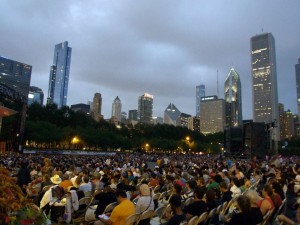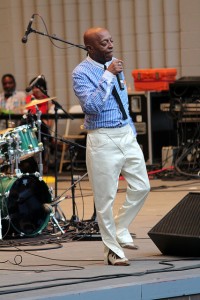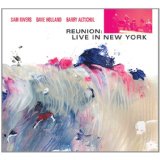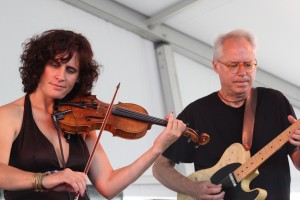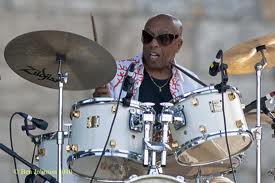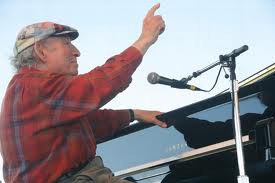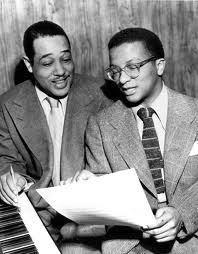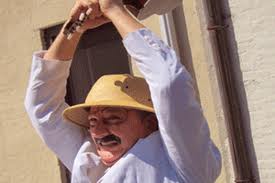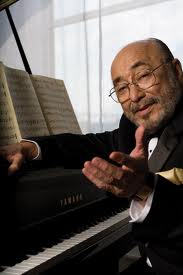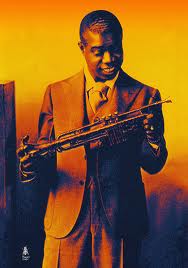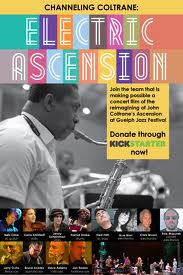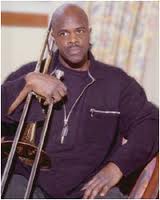Being in Chicago during the week pre-Labor Day for the City’s Department of Cultural Affairs and Special Events (DCASE)-produced, Jazz Institute of Chi-programmed Jazz Festival has been my annual habit — a good one. My hometown continues to reward broad and deep musical listening: A far-South Side “send-off” for newly departed NEA Jazz Master saxophonist […]
Charlie Parker would be proud of 20th anniversary fest
The immortal Charlie Parker — the dazzling alto saxophonist who helped raise jazz to an abstract art form and embodied “hip” as a person experienced, perceptive, hedonistic, aware of the contradictions — would have dug the 20th anniversary Charlie Parker Jazz Festival held in Marcus Garvey Park, Harlem, Manhattan, New York City yesterday. His old buddy […]
First impressions on new jazz/blues/improv releases
Away for a week, upon my return I’m looking at 30 new releases, a surprising number for late August. Of course they’ve been pouring in all summer — this has been an extraordinary season for the issue of ambitious new projects by young artists and veterans both. Here are some immediate reactions to a handful. […]
Music, people and context at Newport Jazz Fest 2012
My new CityArts-New York column covers some of what went down at the 2012 Newport Jazz Festival. With three stages running staggered but near-simultaneous performances, there was much too much happening to hear it all (I’ve been listening to some of what I missed, like Bill Frisell’s modern string band tribute to John Lennon, at […]
Celebrate Charlie Parker with Roy Haynes and me
The NYC Charlie Parker Jazz Festival began 20 years ago and returns starting Aug. 17 with a week of activities leading up to free concerts Aug. 24 – 36 in Marcus Garvey Park, Harlem, and Tompkins Square Park, East Village. I will present headliner Roy Haynes with his “Drummer of the Year” Award from the Jazz Journalists […]
Jazz Festivals in Newport, and everywhere
The 58th anniversary of the Newport Jazz Festival starts tonight (Friday, 8/3) in Rhode Island, and thanks to producer George Wein, there’s a press bus going that I’ll be on. But you don’t have to go to Newport for the jazz fest experience — small towns as well as large ones throughout America (and beyond) […]
Are there new songs? Play what’s recorded on gigs?
The venerability, relevance and novelty of the “jazz standard” is being questioned in the jazzosphere, but I wonder about the dearth of new songs that are sticking in my latest column in CityArts-New York. In my just- previous column I reviewed recent albums by a few musicians gigging in NYC, and warned there’s no reason to expect […]
They had me at the rope trick: Vaudevillian Travesties of 2012 in NYC
AJ Silver is a cowboy from The Bronx, and his lasso act opening “Travesties of 2012,” a vaudeville cavalcade curated by Trav SD at the New York Music Theatre Festival brought out the grinning 3rd grader in me. Not a bad thing — it’s quite the pleasure to see a 14 foot hank of rope […]
Short list: 2013 NEA Jazz Masters announced (My guy won!)
Last January during the NEA Jazz Masters ceremonies at Lincoln Center, I blogged “Who should  the next NEA Jazz Masters be?” and wrote, “My own list of deserving nominees — it starts with Eddie Palmieri.” Today the NEA announced  its  Jazz Masters of 2013 — Eddie Palmieri! — pianist-composer-arranger-bandleader and spokesman known as the Sun of Latin Music. […]
True story: Armstrong the Unknown at the supermarket. Assume nothing.
True story, just happened: The cashier at my Brooklyn Shop Rite supermarket asks, “Who’s that on your shirt?” I glance down at my tee, not recalling what I threw on this morning. “Louis Armstrong.” I see it’s one from the Jazz Institute of Chicago, a print of Gary Borreman’s painting of Pops as he looked […]
Funding jazz projects: Kickstarter and other pleas
Do-it-yourself practicalities pertain to serious jazz projects — artists whatever their art form do what they must to fund their projects. Hence Kickstarter, the platform that seems to have become the functional alternative to asking wealthy patrons to underwrite expeditions, experiments and print folios. That model worked for Columbus, Edison and Audubon, so why not for Franz […]
Harlem cultural center goes dark, Craig Harris moves on
The end of seven months of Monday music by trombonist Craig Harris’ funky and exciting improvising ensemble at Harlem’s Dwyer Cultural Center is one sad part of an all too common story, told in my latest CityArts column. Even when space for community arts activity is required by the city for real estate development, there’s no […]
Proudly: 2012 JJA Jazz Awards NYC and Auckland videos, photos
The 16th annual Jazz Journalists Association Jazz Awards gala party in NYC is well reported in this video by Michal Shapiro, Huffpo vlogger (her specialty: World Music — isn’t jazz “world music”?): Here’s how they celebrated the Jazz Awards in Auckland — and photos from NYC, Atlanta, San Francisco, among other scenes. howardmandel.com Subscribe by Email or RSS […]

